The League of Women Voters hosted a forum on redistricting last night here in Aberdeen. Along with a detailed speech from NSU political geographer Dr. Erin Fouberg and comments from a distinguished and Democrat-packed panel (more on that in a later post), the League engaged an audience of about 20 Aberdonians in a redistricting exercise. South Dakota LWV president Caitlin Collier handed all of us a worksheet showing 35 voters in an imaginary state (Brown County? Wyoming on its side?) and asked us to carve that state into seven fair Legislative districts.
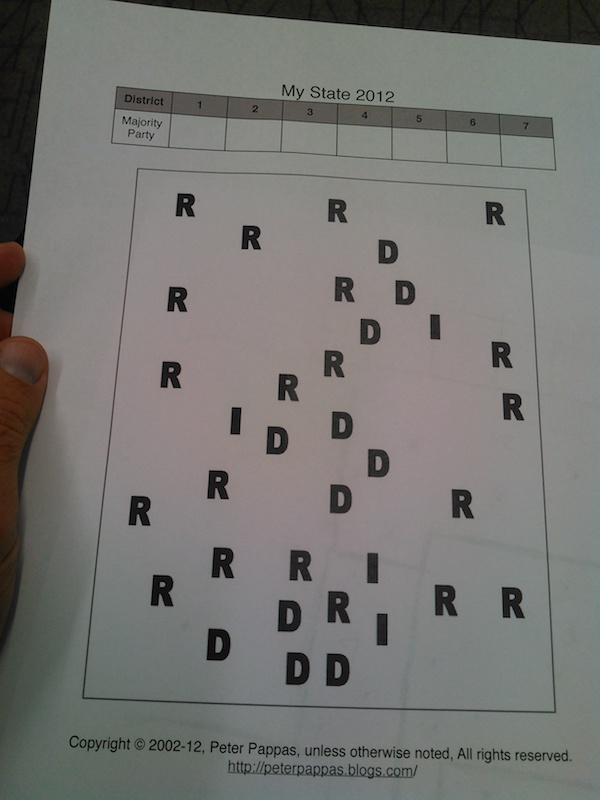
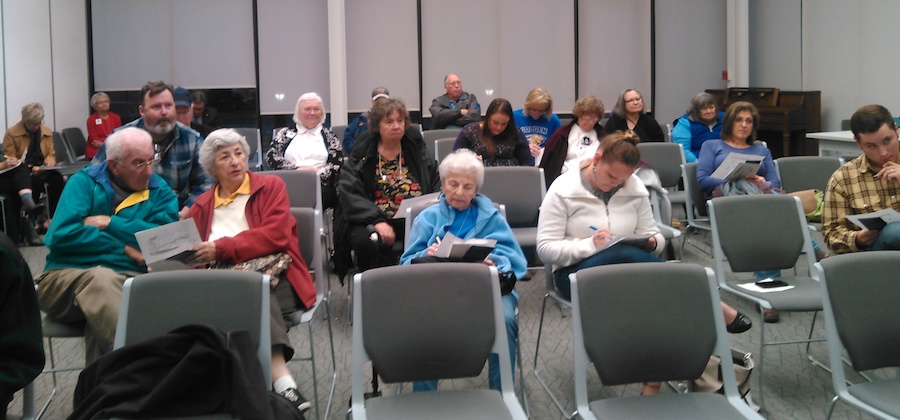
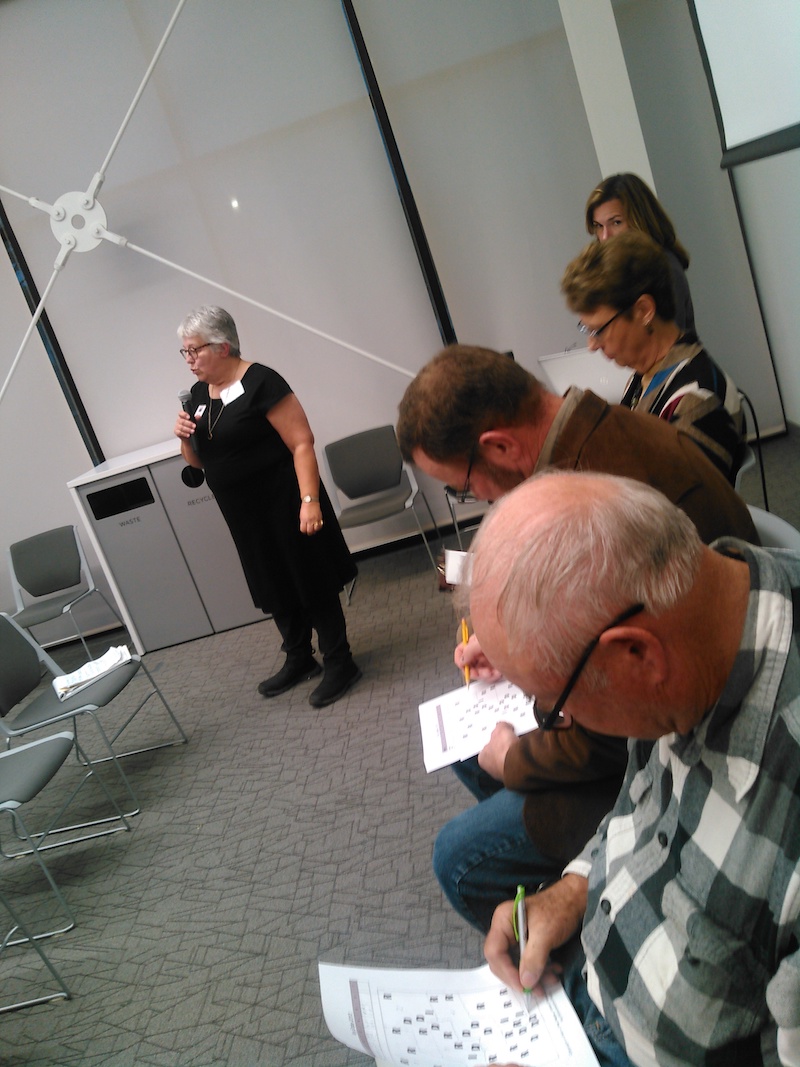
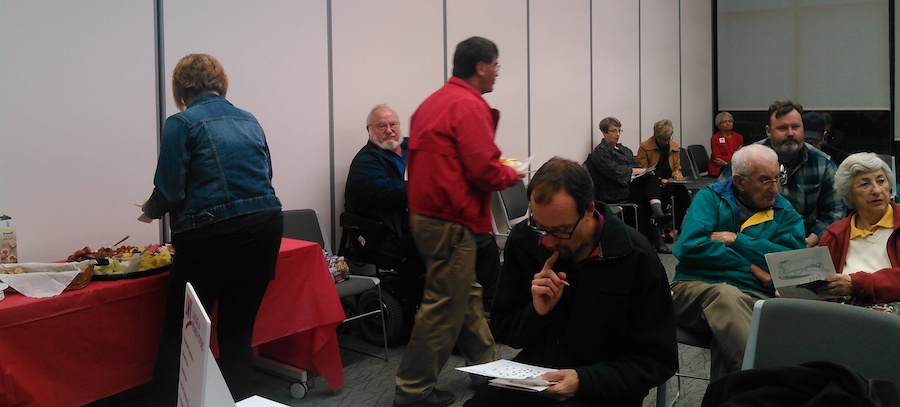
As you can see, pretty much everyone in the room went to town on this geographical, mathematical, and political exercise. Among the panelists and other citizen practitioners of democracy whose work I saw, I appear to have taken a unique approach to drawing fair districts. To keep from considering the Republicans, Democrats, and Independents marked on the map, I flipped the sheet:
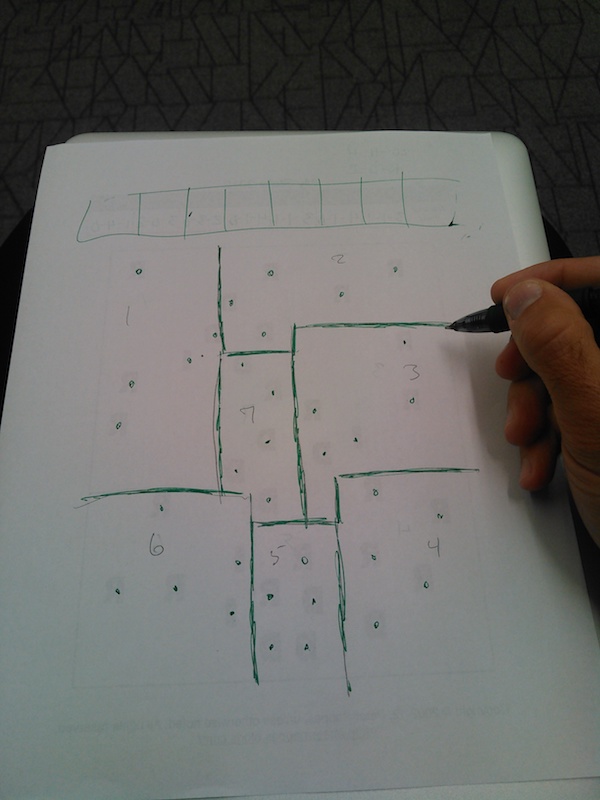
After all, South Dakota’s constitutional criteria for Legislative reapportionment are that districts “shall consist of compact, contiguous territory and shall have population as nearly equal as is practicable, based on the last preceding federal census.” Our constitution says nothing about considering party affiliation of voters; as an honest constitutional conservative, I thus ignore that factor. I divided my 35 voters into seven districts with five voters each. In a “state” that is 5.5 by 7 inches, out of the 70 resulting voter relationships, only two result in two voters (and thus potentially a voter and her elected representative) being almost 3 inches apart.
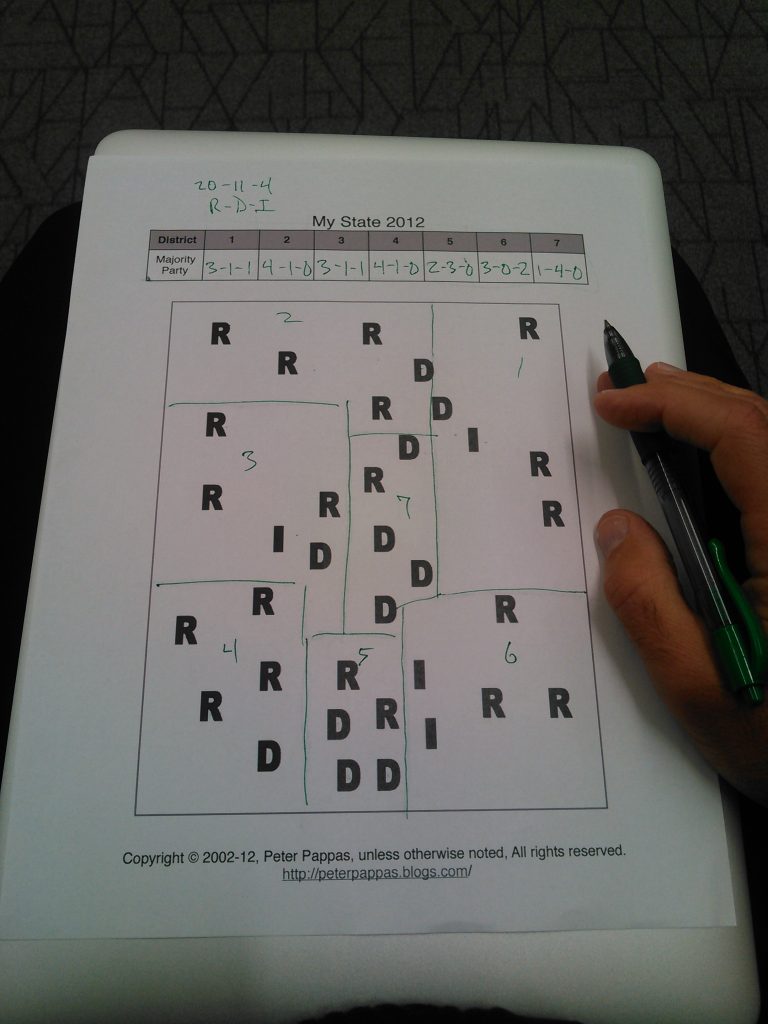
When I turned the sheet back to check the partisan labels, I found that in a “state” that’s 57% Republican, 31% Democratic, and 11% independent, my party-blind mapping created five majority Republican districts and two majority Democratic districts. That 71%/29% partisan split may not look as fair as the 57%/43% I could have gerrymandered by clustering Democrats into 4, 4, and 3 in the center and leaving some long, skinny districts on the side, but that’s only if you think political parties are entitled to a certain number of seats in the Legislature. My map satisfies the law of the land, which is blind to partisan interest and focuses instead on giving citizens equal representation by people who live reasonably close to them.
More on the conversation at the forum (including Rep. Wismer’s whoopin’ of Senator Novstrup) in a later post!
So Cory, I wonder if this changes your perspective on how districts are formed in South Dakota?
Nope. I still recognize that the majority party in the Legislature draws boundaries to benefit select candidates electoral fortunes and to damage the fortunes of others, and I still believe that we should change our system to employ and independent commission to draw those boundaries without regard to the location of any specific candidate or citizen and without regard to the party affiliation or tendencies of any person or region.
“More on the conversation at the forum (including Rep. Wismer’s whoopin’ of Senator Novstrup) in a later post!”
C’mon Cory, quit playing with us!
Had to work my way from start to finish, Debbo:
https://dakotafreepress.com/2018/10/03/wismer-pounds-novstrup-with-straight-talk-on-gerrymandering/
Make it easy on everyone and banish stoopid freaking wingnuts from participating in good government, or any other kind of government.
Kavernmouth will vote to allow wingnuts to gerrymander to their hearts content, unless Dems win.